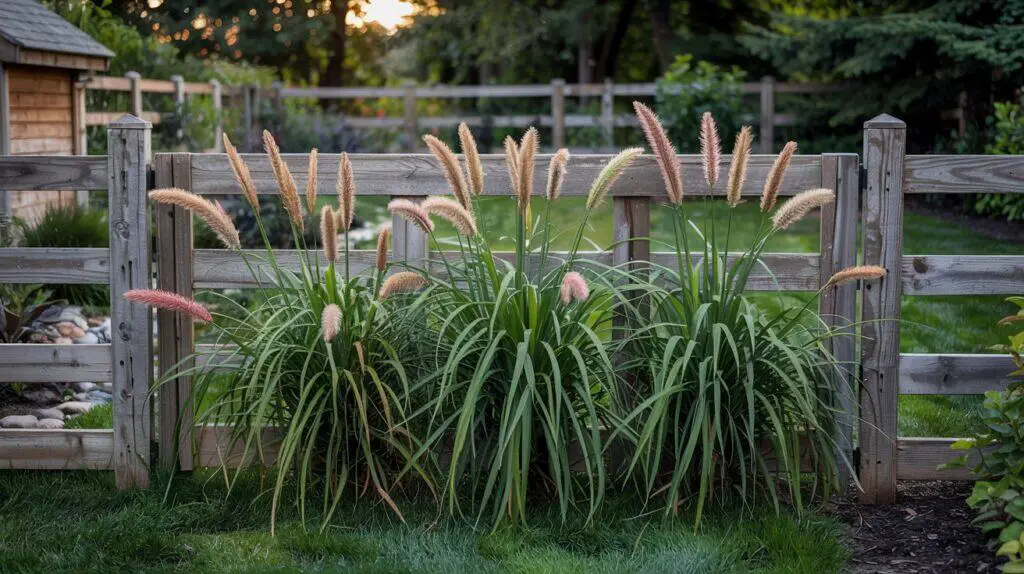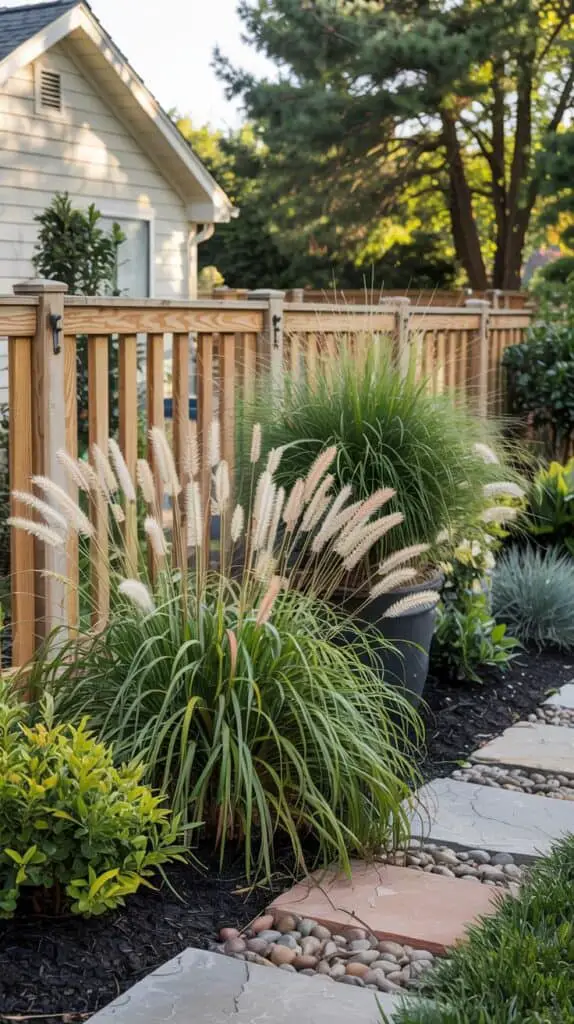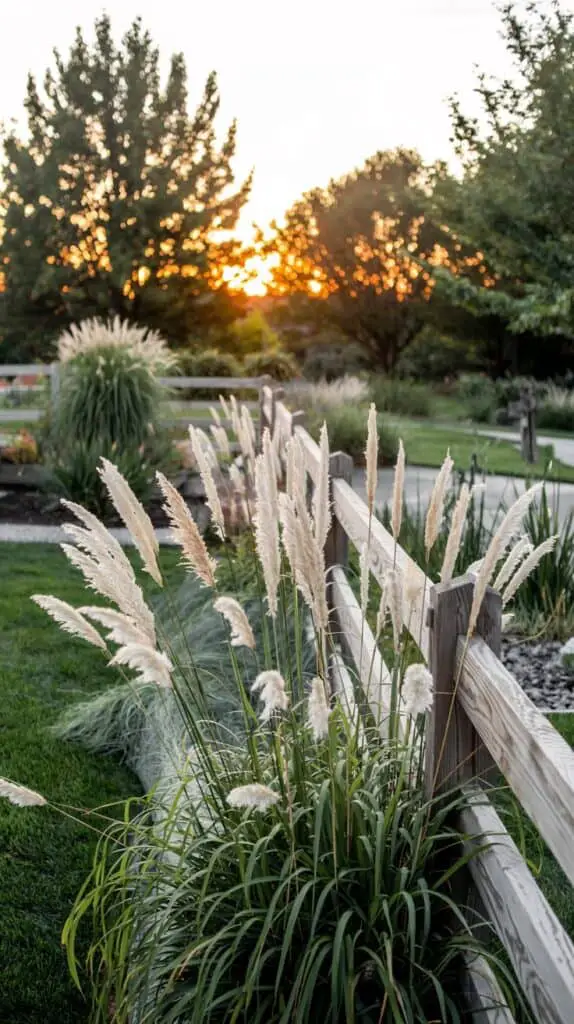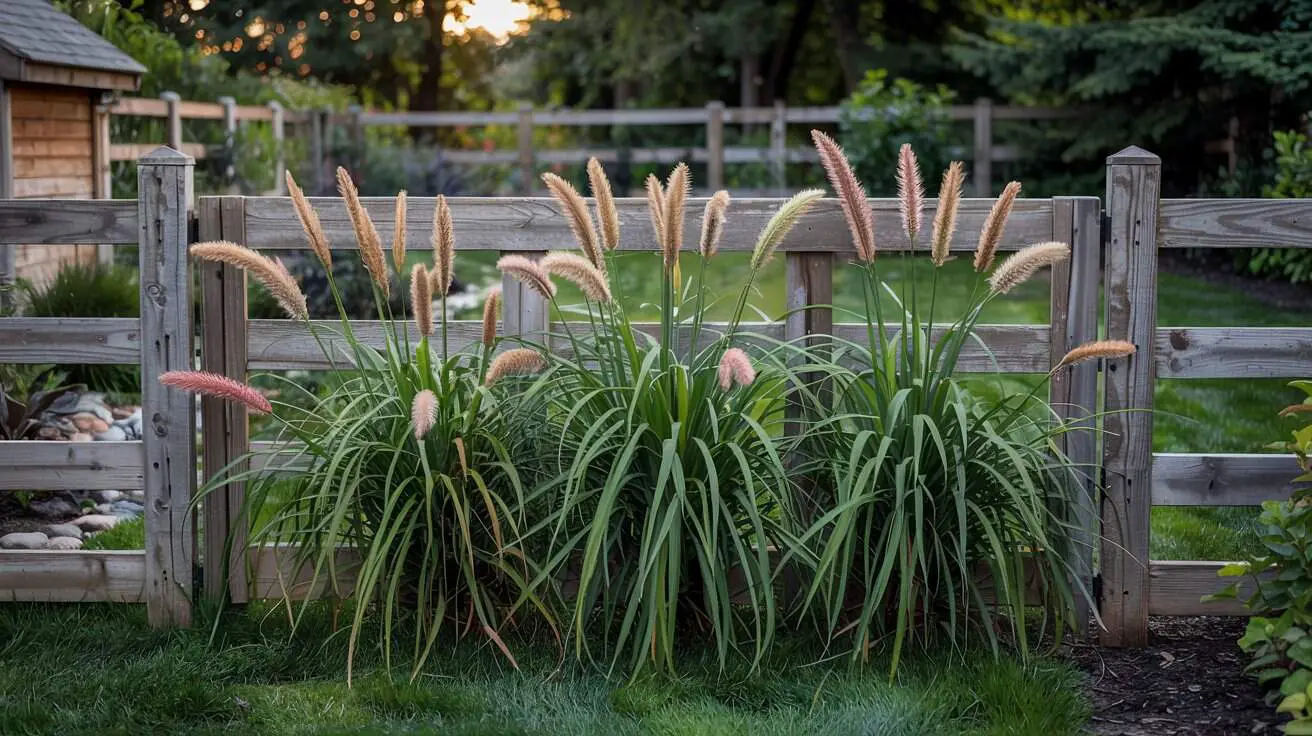
Sometimes your dog yard fence does its job but doesn’t exactly win any design awards. That’s where tall ornamental grasses come in. Whether you’re working with hog wire, wood posts, or a chicken wire setup, the right grasses can soften the look, add texture, and help everything blend beautifully into your backyard. They’re pet-friendly, low-maintenance, and great for full-sun areas.
Why Ornamental Grasses Work So Well

Tall ornamental grasses are a brilliant natural screen. Many varieties grow fast, handle poor soil, and offer movement and color without blocking air or light. For dog-friendly backyards, they’re an especially smart choice because they aren’t harmful to pets (when chosen carefully), and they add a buffer between your pup and the fence.
Fountain grass, switchgrass, and maiden grass are all great options—just double-check that your picks are non-toxic if your dog’s a bit of a chewer.
Best Grass Varieties for Privacy and Style

If your main goal is to hide the fence, go for grasses like Miscanthus or tall feather reed grass, which grow up to 5–7 feet. For something softer and dreamier, pink muhly grass adds a fluffy cloud of color in the fall. Plant them in clusters for full coverage, or mix in shorter grasses like blue fescue and dwarf fountain grass for a tiered look.
Native grasses are also worth a look—they’re tough, drought-tolerant, and support local wildlife while staying low-effort.
How to Plant Them Along Dog Runs or Side Yards

Along narrow side yards or fence lines, spacing is key. Leave enough room so your dog can still run and explore without trampling the plants. You can use mulch or gravel paths in between to make the space more paw-friendly. If your fence is see-through (like hog wire or chain-link), position taller grasses directly in front to create visual privacy.
For chicken wire fences, you might want to plant in raised beds or use edging to prevent digging or damage to the roots.
Tips for a Low-Maintenance, Pet-Safe Garden
Choose grasses that thrive in full sun if your yard gets a lot of light—many ornamental grasses love heat and don’t need much watering once established. Cut them back in late winter or early spring, and avoid fertilizers, which can lead to floppier growth. To keep everything neat, trim any sharp edges that grow too close to the walkway or dog path.
And if you want extra curb appeal? Try mixing in flowering plants like black-eyed Susans or coneflowers that grow well with grasses and won’t clash with your fence design.

